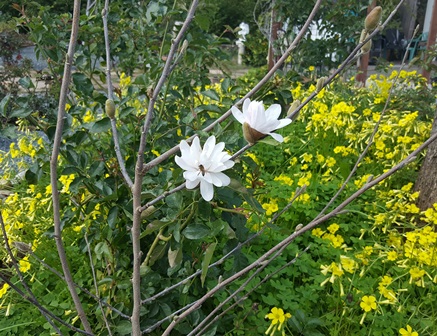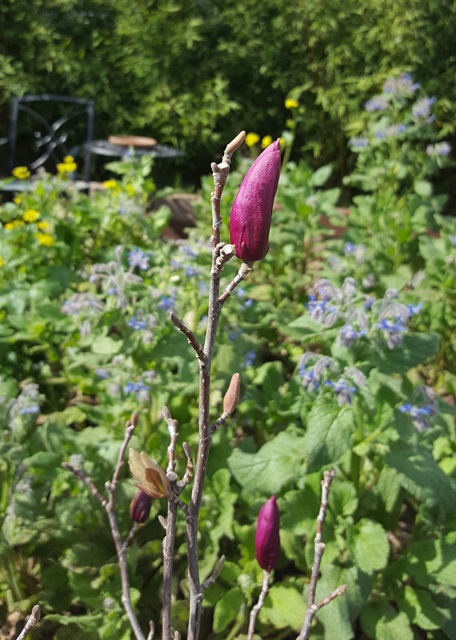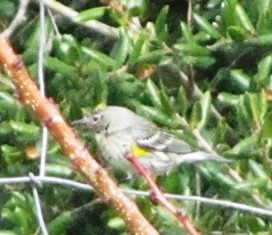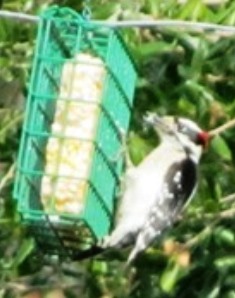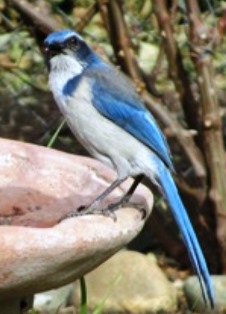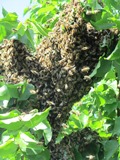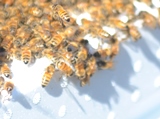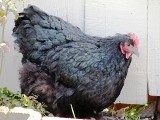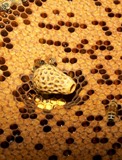The Star of Spring–the Mighty Magnolia
My spouse hails from the Caribbean where a variety of magnolias grow, but many in the islands are under threat from deforestation and small distributions. He’s wanted to plant a magnolia tree since we moved to the farmette. Recently, on a rainy evening, we ventured out to our local nursery and purchased a Royal Star and a Jane magnolia for the large entrance area at the front of our property.
Often, it is the m. grandiflora that comes to mind when someone mentions a magnolia tree. It’s a big evergreen tree with glossy leaves, large tulip-shaped white flowers, and dense canopy. This tree blooms summer and fall, while other types of magnolias bloom before their leaves show in the spring.
Magnolias offer gardeners many options–evergreen or deciduous types, wide-range of flower colors, slow or fast-growing trees, and small to large and stately specimens. Named for the French botanist Pierre Magnol (1638-1715), the genus includes about 100 species.
Magnolia blossoms are fragrant and attract various pollinators. While some magnolias grow well in containers for a few years or as espaliers, the larger, showy trees are often planted along city streets and in parks.
Until we have settled on the exact planting site for each of our magnolias, they will remain in their pots. Where to plant them is an important decision since magnolias do not like to be moved once established. As a general rule, they need rich well-drained soil and benefit when the soil has plenty of organic matter like leaf mold, peat moss, and ground bark mixed in at planting time.
Magnolia trees must be planted no lower than their original soil level (where the trunk begins in the planting pot). Because they need plenty of water until established, it’s a good idea to dig a watering basin around them. Young trees must be staked to protect against wind damage.
We chose the Royal Star magnolia (magnolia stellata) because it can hold abundant and spectacular white (or pink) perfumed blossoms throughout spring into summer. Reaching a height of 15 feet with a canopy spread to 10 feet, this beauty looks magnificent against a garden fence. Such a barrier will help protect it against the wind and also create a foil for the blossoms. Come autumn, songbirds will feast on the high-fat content of the star magnolia’s capsules of orange seeds.
The Jane magnolia is one in a Little Girl series of hybrid magnolias that include: Ann, Betty, Judy, Pinkie, Randy, Ricki, and Susan. These magnolias were developed in the mid-1950s at the National Arboretum by Francis DeVos and William Kosar. Jane has large-cup flowers opening reddish-purple with white interiors. Shortly after the blossoms show, the leaves emerge as a coppery-red before turning green.
At the moment, our Jane magnolia, with its roots balled and wrapped in burlap and looking like a shrubby bush, is covered with an abundance of buds as yet unfurled. The buds hold the promise of the fragrant purple blossoms in a couple of weeks. This slow-growing magnolia will reach a height of 10 feet with a 10-foot canopy spread. The plant will be a sure show-stopper in any Northern California garden, especially in spring.
* * *
If you enjoy reading about gardening or other farm topics like keeping bees and chickens, check out my cozy mysteries–A BEELINE TO MURDER, THE MURDER OF A QUEEN BEE, and (coming Sept. 2017) A HIVE OF HOMICIDES (in the Henny Penny Farmette series from Kensington Publishing).
My farm-based novels feature delicious recipes, farming tips, chicken and beekeeping tips, sayings and, of course, a charming cozy mystery. The books are available through online retailers such as Amazon, Barnes & Noble, Target, BAM, Kobo Books, and Walmart as well as from traditional bookstores everywhere.
See, http://tinyurl.com/hxy3s8q
See, http://tinyurl.com/h4kou4g
See, http://tinyurl.com/zsxqmm3
Working the Beds after the Weekend Storm

A “Pineapple Express” rainstorm with gale-force winds blew out the power and made for slick roads as well as ponds in our clay soil
The weekend storm is still a vivid memory, what with the fence along one side of my property beaten down by high winds and pounding rain that also brought a power outage on Friday night.
But today with outside temperatures in the 70s Fahrenheit, I cleaned my strawberry beds. Somehow, mint had crept in and I don’t want mint with my berries although I like it served that way for dessert.
My neighbor’s relative, who’s visiting from Lebanon where they grow apples in his mountain village, share a suggestion for digging dried chicken manure around the bases of my trees. The high nitrogen will get them off to a great start and my trees have already broken bud (which is attracting the honeybees).
The wild bird population seems to have exploded and I see signs of nest building starting. The five suet cakes I hung in trees for the songbirds, blue jays, and woodpeckers last month are down to a fraction of their original size.
I extended the chicken run with poultry wire high enough to keep the my heritage girls from flying out. Now, they’ll have plenty of space on both sides of the chicken house to forage and out the beds I’m working.
Yellow-Rumped Warbler and Other Songbirds Act Like It’s Spring
It’s the middle of January but tell that to Mother Nature whose songbirds are singing like it is spring. With our temperatures expected to exceed 70 degrees Fahrenheit in parts of the Bay Area today, the birds are gathering around feeders and fountains and the bees are buzzing about, too.
While having coffee on the patio this morning, I had the privilege of being visited by a variety of winged friends, some seemingly oblivious to me and my camera.
The woodpecker announces himself with the familiar rat-ta-tat-tat while the yellow-rumped warbler and other songbirds hang out in the firethorn bush, in the oak trees, and at several fountains we’ve placed at the rear of our farmette.
There’s a lot of bee traffic today. With warm days forecast for the next week or two, the bees could get the wrong idea and swarm. That would undoubtedly surprise the local backyard bee hobbyists.
So while I love the warm weather–especially when I read about the polar temperatures causing such misery in the Midwest and along the East Coast–like many Californians, I am beginning to worry about the looming possibility of a drought this year and mandatory water rationing.
But, then again, there’s something magical about hearing songbirds trilling in the dead of winter when the fruit trees in the orchard and the roses lining the path to the front door remain soundly asleep. I think I’ll have another cup of coffee and sit for a while longer.
Henny Penny Farmer’s Almanac–Sayings
Humans could learn a thing or two from the world of honeybees where all endeavor benefits the entire colony, not an individual bee.
A tea made of meadowsweet, chamomile, or peppermint herbs can calm an upset stomach.
To get stronger egg shells, feed your chickens extra calcium.
Producing manure is easy; it’s the moving of it that takes patience and the right shovel.
Sow above-ground plants during a waxing moon and below-ground plants during a waning moon.
The simplest treatment for a bee sting is to get the stinger out.
Move chickens and bees at night; when they awake in the morning, the move is a fait accompli.
If you enjoy listening to songbirds, it might interest you to know the male is generally the singer since he uses song to attract a mate and defend his territory.
Birds don’t just sing; they call, and their calls are how they communicate
with a partner or sound the alarm that a predator is near.
Box and jug wines are fine as long as you never drink or cook with a flawed wine.
Use a dab of raw honey or bee propolis to treat a peck wound on a chicken as honey and propolis have antiseptic, antibacterial properties.
Each nostril of a dog’s highly sensitive nose can separately track scents—a skill proving useful to humans in finding illegal drugs, locating dead bodies, and even detecting cancer.
Red wine remains drinkable for decades because the tannins act as a natural preservative; however, the wine must be properly bottled and stored.
If you want to lower your cholesterol, decrease your stress level
and improve your blood pressure, adopt a dog.
Pacific oysters can engage in annual sex reversals; male one year, female the next—one of nature’s many surprises.
Help your chickens go through the molting process (when they lose feathers and stop egg production) by feeding them 20 percent more protein and limiting their stressors.
Time spent in a garden is a lot like yoga; it slows the breath, quiets the mind, and lets you get to the truth.
To break your dog’s habit of licking you, get up and go into another room
immediately when the licking starts so the animal will associate its licking with your leaving.
If you don’t want to be devoured by insects, wear light colors when gardening.
If you want to strengthen your immune system, consume a teaspoonful of raw buckwheat honey every day.
A honeybee queens live 10 times longer than her worker bee sisters and while they are sterile, the queen remains reproductive throughout her life.
To keep your bee colony strong and robust, feed your honeybees when their food sources become scarce.
To make a fat-free broth, pour the juices of a roasted chicken or turkey into a wide-mouth jar and refrigerate until solidified; then, skim away the fat that has risen to the top.
You can’t shift the status quo if you don’t take action.
When relationships sour like beans and bitter herbs, an hour in a garden
can generate the sweetness of new dreams.
©November 2013 by Meera Lester
Permission is granted for use of individual quotes, provided the quoted material contains the following credit: “Used with permission from Henny Penny Farmers’ Almanac.”
 Facebook
Facebook Goodreads
Goodreads LinkedIn
LinkedIn Meera Lester
Meera Lester Twitter
Twitter





